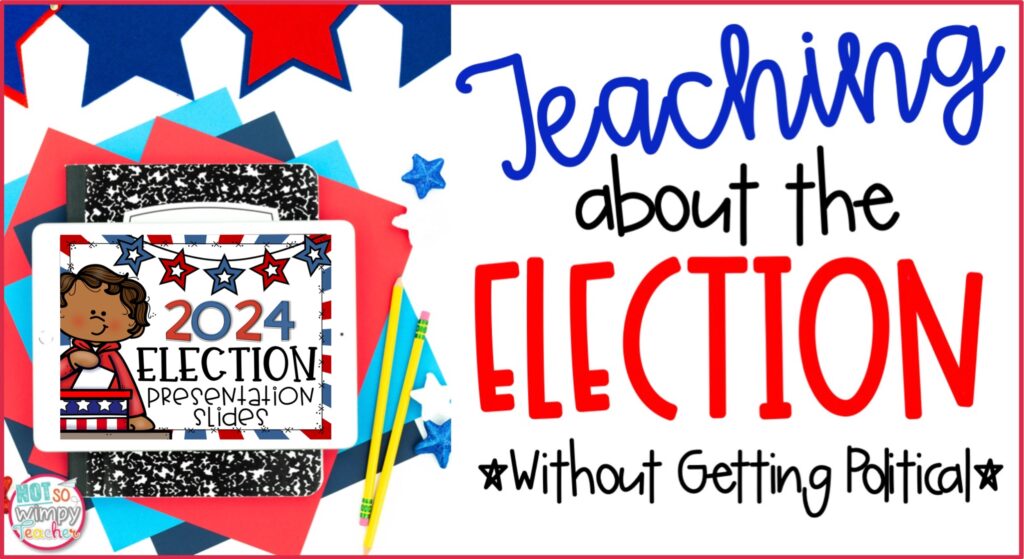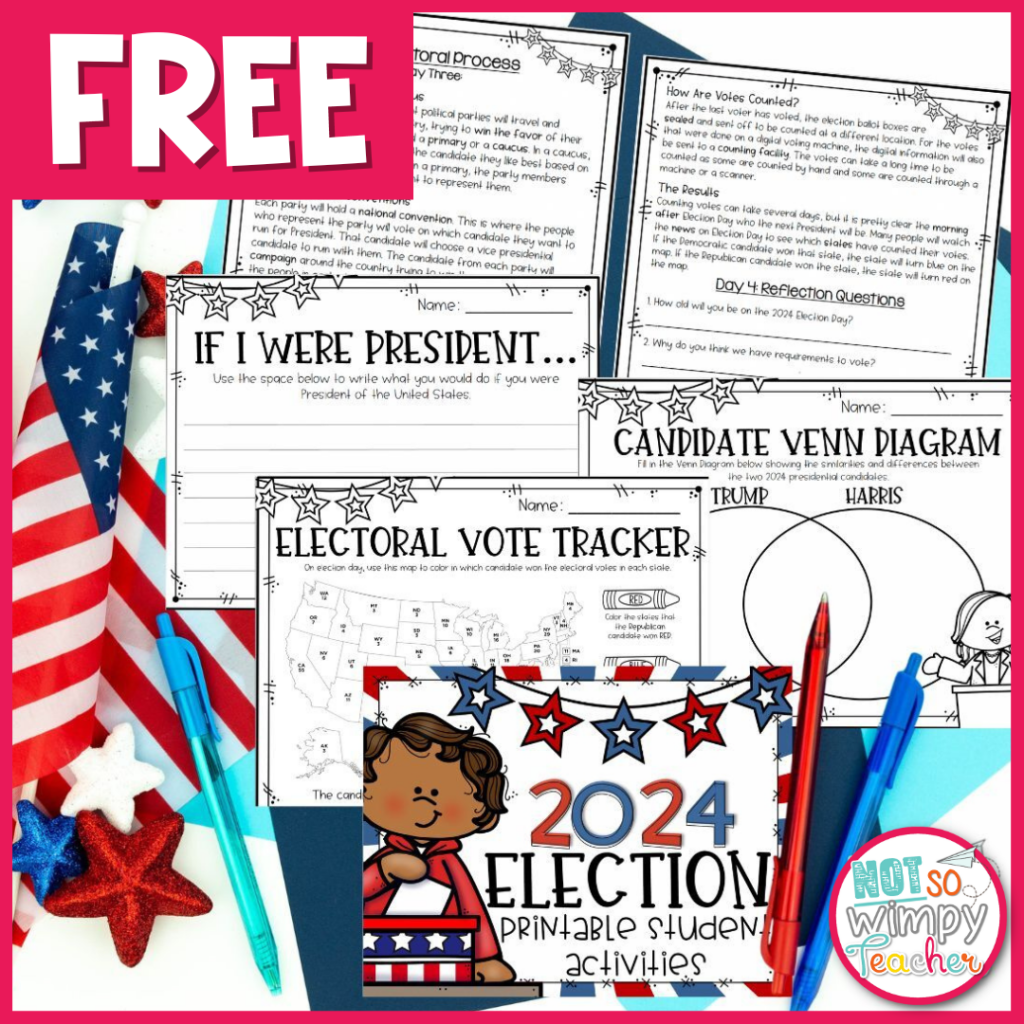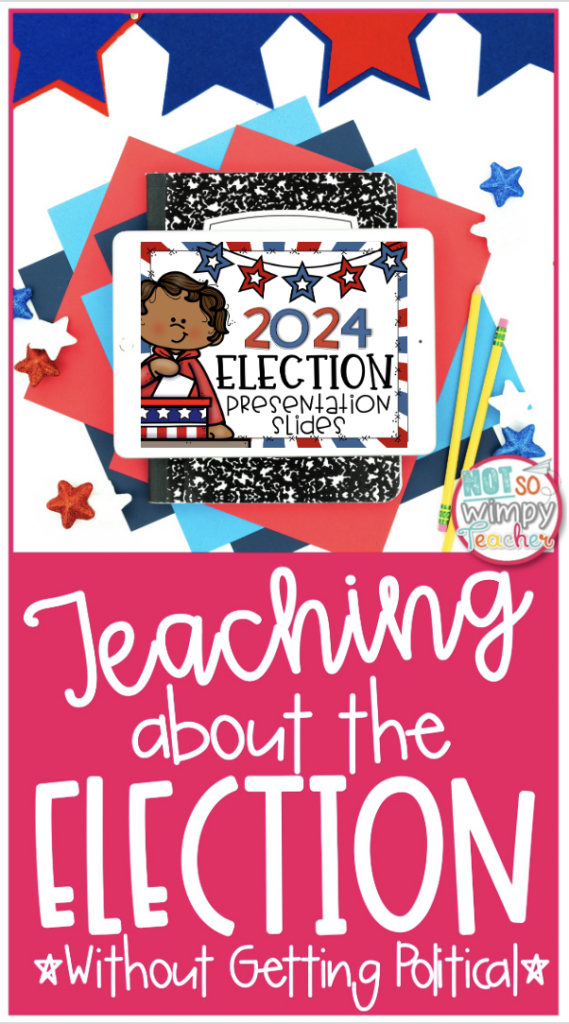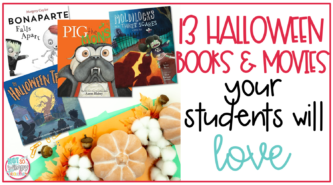
Teaching about the election and voting is a MUST in every classroom!
I know that it can feel scary to tackle a topic that can easily get emotional, nasty or heated. We have all seen the commercials and posts on social media that mention a candidate. It almost always brings out the worst in people.
So why cover the election in the classroom?
- it’s often a social studies standard that we are required to cover
- voting is a privilege and a duty and learning about it at an early age will encourage students to be active voters as adults
- they will hear about it on the playground and on the school bus, so we should make sure they understand the facts
- it leads to meaningful conversations and the opportunity for students to see that everyone doesn’t have to agree or be the same
You CAN cover the election and voting without getting political.
What to Teach About the Election
No, you are not going to teach about who their parents should vote for or why a candidate is not a good option. That’s just asking for trouble!
I generally think it is best to keep to the history and structure of elections.
You can cover election topics such as:
- Why do we vote and why is it important?
- How did we get the right to vote and who can vote?
- When do we vote?
- What is the difference between local, state and federal elections?
- What is a primary election vs. general election?
- What is a political party?
- Who is running for president and what does the president do?
I do believe that it is perfectly ok to talk about who is running for president. You can have this conversation without talking about their ideological beliefs. You will probably want to tell your students that you aren’t going to be discussing who is the best person for president.
Some topics that you can discuss about the candidates are:
- their names
- where they are from
- their education and experiences growing up
- their families
- their careers so far
- their vice-presidential running mates
Topics like this help students to get curious! I would encourage them to go home and have a conversation with their parents.
Mock Election
Hosting a mock election helps students to see the process of voting firsthand. It’s also a fun way to practice opinion writing and speaking skills!
When doing a mock election, I encourage you to choose the topic carefully. Often I see teachers doing a Favorite Candy Election. I am opposed to this topic because it rarely leads to meaningful conversation and debate. It’s extremely hard for an 8 year old to come up with good reasons to debate why Snickers is better than Butterfinger.
If you really want to get your kids thinking deeply, choose a topic that will be easier for them to come up with reasons for and arguments against.
Some good topics might be:
- class book of the year
- class president
- class service project
- class pet
I highly recommend mixing this in with your opinion writing unit, if possible. Students can write essays and then read them to the class. You can treat this like the primary election and narrow down the choices to just two. Every student can choose a side and select a speaker to debate their side. End with a general election.
You might even invite another class to come and listen to the general election speeches and cast votes with your class!
FREE Interactive Election Activities
I know that teaching about government and elections isn’t every teacher’s favorite topic. So, I wanted to make it easier for you!
We created this unbiased election resource that includes informational text and engaging activities for students to complete. We included embedded audio on every slide to make it easier for students who benefit from that support.
All of the activities can be completed digitally or on paper.

The topics include:
- Day 1: Election History
- Day 2: Current Candidates
- Day 3: Electoral Process
- Day 4: It’s Election Day
- Day 5: If I Were President
Don’t be scared to talk about the election with your students. They will have the privilege of voting in an election in the future! We want to raise a generation that is eager to vote.

Have a Not So Wimpy day,



















 End of Year Carnival Week for grades 2-5!
End of Year Carnival Week for grades 2-5!
Would this resource be appropriate for a 4th grade ELA classroom or is it really only a resource for social studies?